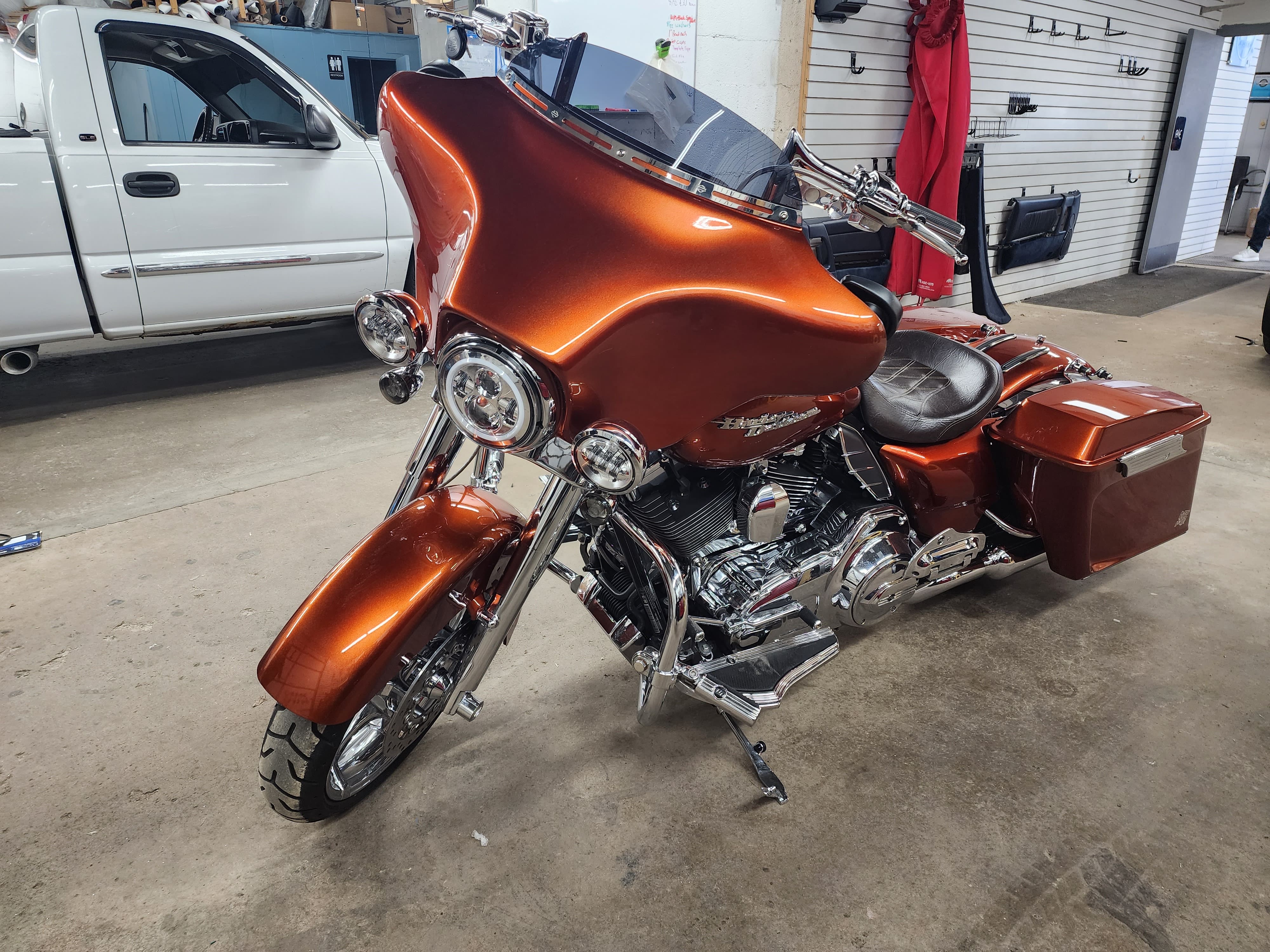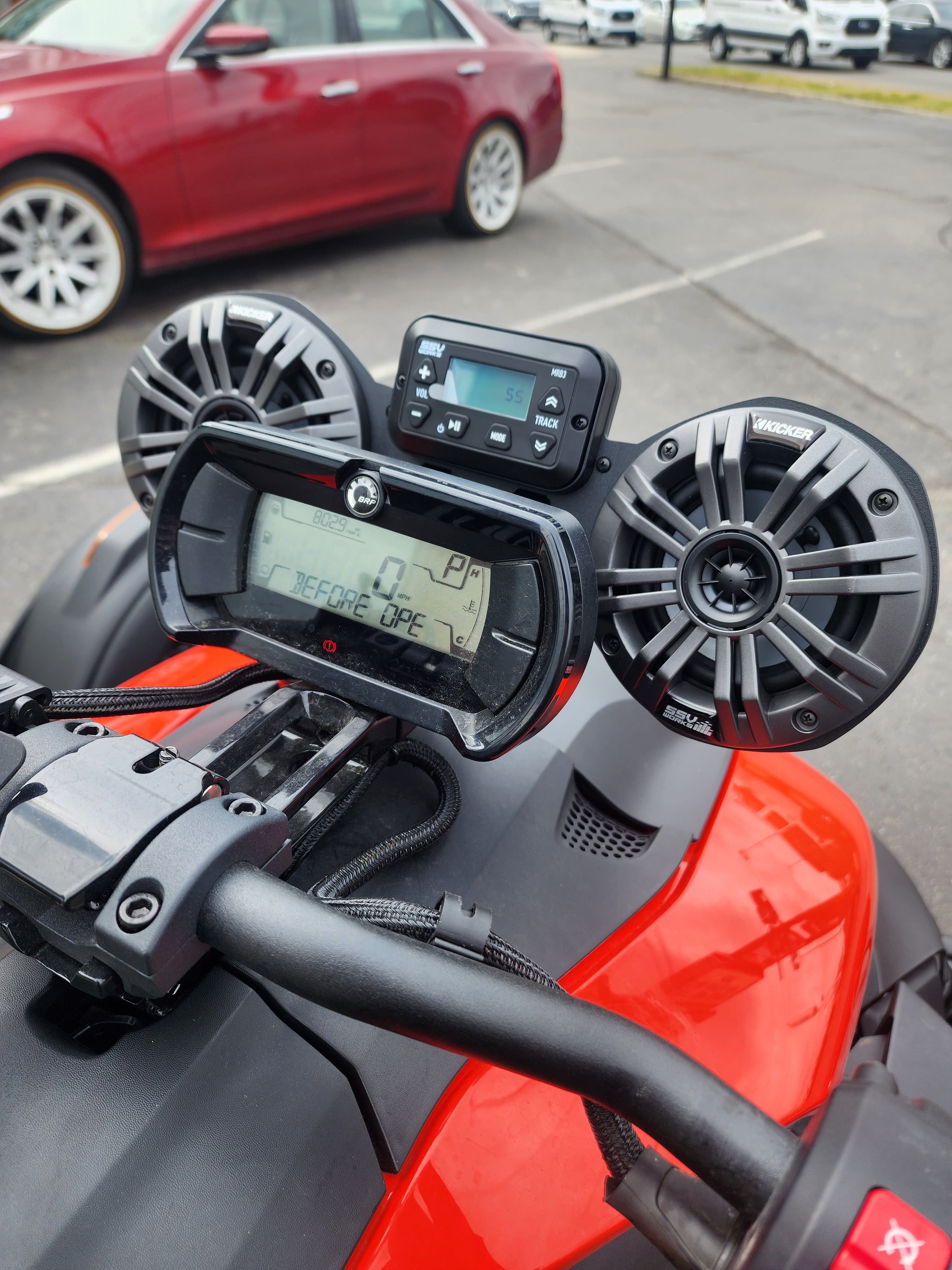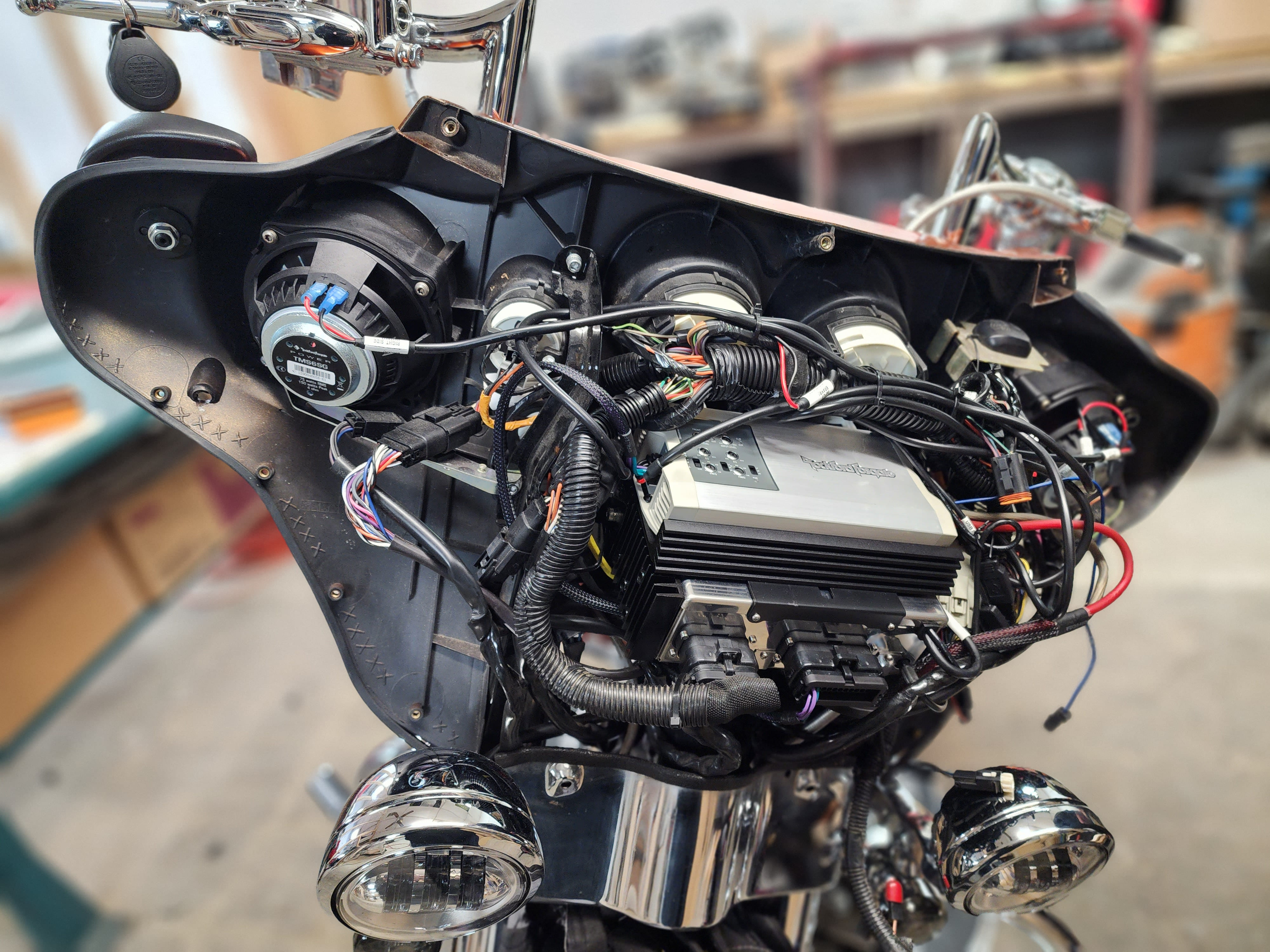Boost Your Ride: Top Premium Audio Accessories for Motorcycle Enthusiasts
For motorcycle enthusiasts, the open road offers not just a path to adventure but a canvas for fine-tuning their ride to perfection. One area where bikers can significantly enhance their journey is through the integration of premium audio accessories, transforming every ride into an auditory delight. From cutting-edge motorcycle sound systems to high-quality powersports audio solutions, there are numerous options available that promise to enrich the riding experience. Whether cruising through scenic routes or navigating urban landscapes, the right motorcycle audio equipment can provide a soundtrack that elevates the thrill of the ride. This guide will explore top-tier audio accessories that cater to the needs of sound-savvy riders, offering insights into the latest technologies and products designed to make every trip memorable.
Motorcycle audio has come a long way, offering riders new ways to enjoy their favorite tunes on the road. Let’s explore how sound can enhance your ride and why quality matters in powersports audio.
Enhancing Your Ride with Sound
Music can make any motorcycle trip more enjoyable. It adds a personal soundtrack to your adventures, helping you stay alert and motivated during long rides.
Good motorcycle audio can also mask wind noise, reducing fatigue and making communication easier. This is especially helpful on group rides or when using navigation apps.
Lastly, a quality sound system can increase your bike’s resale value. It’s a feature many riders look for when shopping for a used motorcycle.
Why Quality Matters in Powersports Audio
High-quality powersports audio is about more than just loud volume. It’s about clarity, durability, and functionality in challenging outdoor conditions.
Quality speakers and audio components can withstand vibrations, weather, and road debris better than cheaper alternatives. This means your investment lasts longer and performs better over time.
Moreover, premium audio accessories often come with advanced features like Bluetooth connectivity, voice control, and integration with other bike systems. These extras can greatly improve your overall riding experience.
Types of Motorcycle Sound Systems
Motorcycle audio comes in various forms, each with its own advantages. We’ll look at handlebar speakers, helmet audio, and Bluetooth intercoms.
Handlebar Speakers and Their Benefits
Handlebar speakers are a popular choice for many riders. They’re easy to install and provide clear sound without the need for headphones.
These speakers are designed to be weather-resistant and can handle the vibrations of riding. Many models also include built-in amplifiers for better sound quality.
One big advantage of handlebar speakers is that they allow you to hear ambient sounds, which is important for safety. They’re also great for sharing music with passengers or other riders nearby.
Helmet Audio: A Close-Up Look
Helmet audio systems offer a more personal listening experience. They typically consist of speakers and a microphone that fit inside your helmet.
These systems provide clear sound even at high speeds, as they’re close to your ears. They’re also more discreet than external speakers.
Many helmet audio setups can connect to your phone or GPS for hands-free calling and navigation. This makes them a versatile choice for riders who want to stay connected on the go.
Bluetooth Intercoms for Group Rides
Bluetooth intercoms are a game-changer for group rides. They allow riders to communicate clearly over long distances, enhancing safety and enjoyment.
Most intercom systems can connect multiple riders, with some supporting up to 16 connections. This means you can chat with your whole group without stopping.
Besides communication, many intercoms also support music sharing and GPS instructions. Some advanced models even have noise-cancelling technology for clearer audio in noisy conditions.
Choosing Premium Audio Accessories
Selecting the right audio gear for your motorcycle involves considering several factors. Let’s explore what to look for, top brands, and some installation tips.
Factors to Consider for Best Sound
When choosing motorcycle audio accessories, sound quality is key. Look for systems with good frequency response and enough power to be heard over wind and engine noise.
Durability is another crucial factor. Your audio gear needs to withstand vibrations, weather, and potential impacts. Water-resistant or waterproof ratings are important for all-weather riding.
Compatibility with your bike and other devices is also vital. Make sure the system you choose fits your motorcycle model and can connect to your phone or other audio sources.
Top Brands in Motorcycle Audio
Several brands stand out in the motorcycle audio market. Companies like Harley-Davidson, Honda, and Indian offer factory-installed systems designed specifically for their bikes.
For aftermarket options, brands like Rockford Fosgate, JBL, and Boss Audio are known for their high-quality motorcycle speakers and amplifiers.
In the realm of helmet audio and intercoms, Sena and Cardo are industry leaders, offering a range of products from basic communicators to advanced, feature-packed systems.
Installation Tips and Tricks
Installing motorcycle audio can be straightforward or complex, depending on the system. Here are some general tips:
-
Plan your installation carefully, considering wire routing and speaker placement.
-
Use weather-resistant connectors and heat shrink tubing to protect electrical connections.
-
Secure all components firmly to prevent vibration and potential damage.
For complex installations involving custom work or electrical system modifications, it’s often best to consult a professional. They can ensure your new audio system is installed correctly and safely.
Maintenance and Care of Audio Gear
Proper maintenance can extend the life of your motorcycle audio system and keep it sounding great. Let’s look at some care tips and common troubleshooting steps.
Keeping Your Motorcycle Sound System in Top Shape
Regular cleaning is crucial for motorcycle audio gear. Use a soft, damp cloth to wipe down speakers and controls, being careful not to let water into any openings.
Check all connections periodically, especially if you notice any sound issues. Loose or corroded connections can cause problems with audio quality or functionality.
For helmet audio systems, make sure to keep the interior of your helmet clean. Sweat and dirt can damage speakers and microphones over time.
Troubleshooting Common Audio Issues
If you experience sound distortion, first check your volume levels. Overdriving speakers can cause distortion and potentially damage them.
No sound at all? Check all connections and make sure your audio source is working correctly. For Bluetooth systems, try re-pairing your devices.
For intercoms, range issues are common. Try to maintain a clear line of sight between riders, and consider upgrading to a more powerful system if you frequently ride in large groups.
Future of Powersports Audio
The world of motorcycle audio is constantly evolving. Let’s take a look at some emerging technologies and what we might expect from future systems.
Emerging Technologies in Motorcycle Audio
Voice control is becoming more common in motorcycle audio systems. This allows riders to control their music, make calls, or get directions without taking their hands off the handlebars.
Noise-cancelling technology is also improving, offering clearer sound in noisy riding conditions. Some systems can even selectively filter out wind noise while allowing important ambient sounds through.
Integration with smart helmets is another growing trend. These helmets often include built-in speakers, microphones, and even heads-up displays for a fully connected riding experience.
What to Expect from the Next-Gen Sound Systems
Future motorcycle audio systems may incorporate more AI technology. This could lead to systems that automatically adjust volume and EQ based on riding conditions and speed.
We may also see more integration with other motorcycle systems. For example, audio alerts tied to your bike’s diagnostics or safety features.
Lastly, as electric motorcycles become more common, we might see audio systems that can generate artificial engine sounds. This could enhance the riding experience for those who miss the rumble of a traditional engine.



